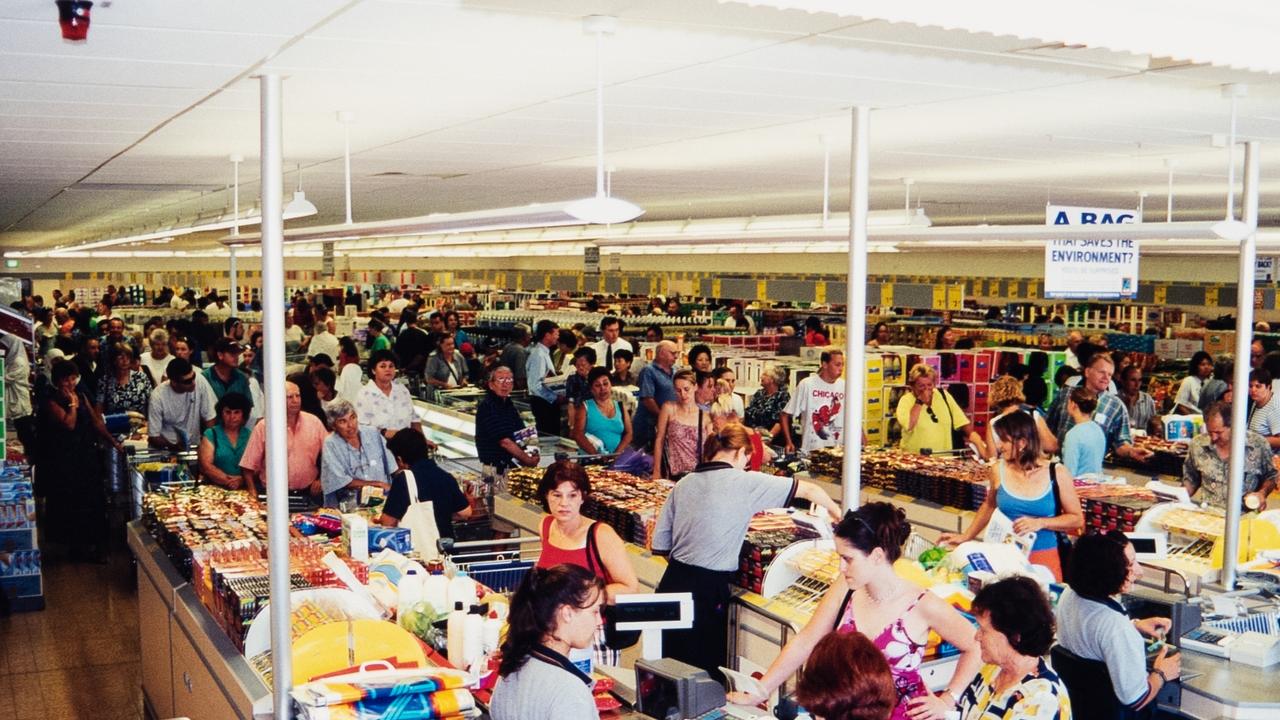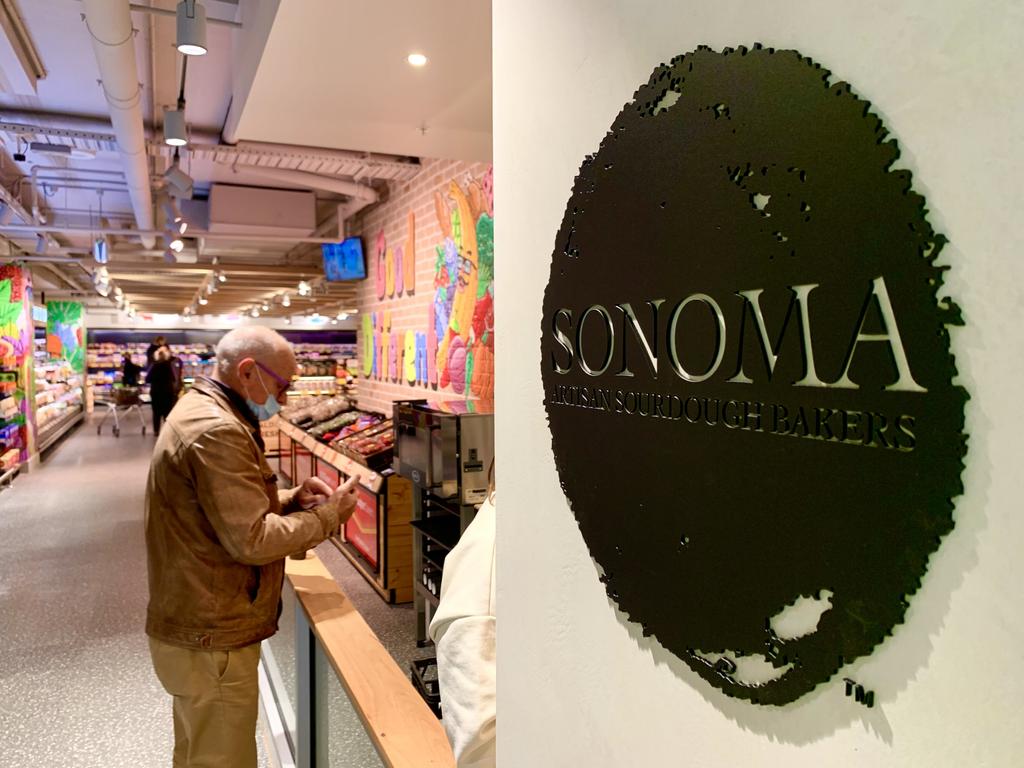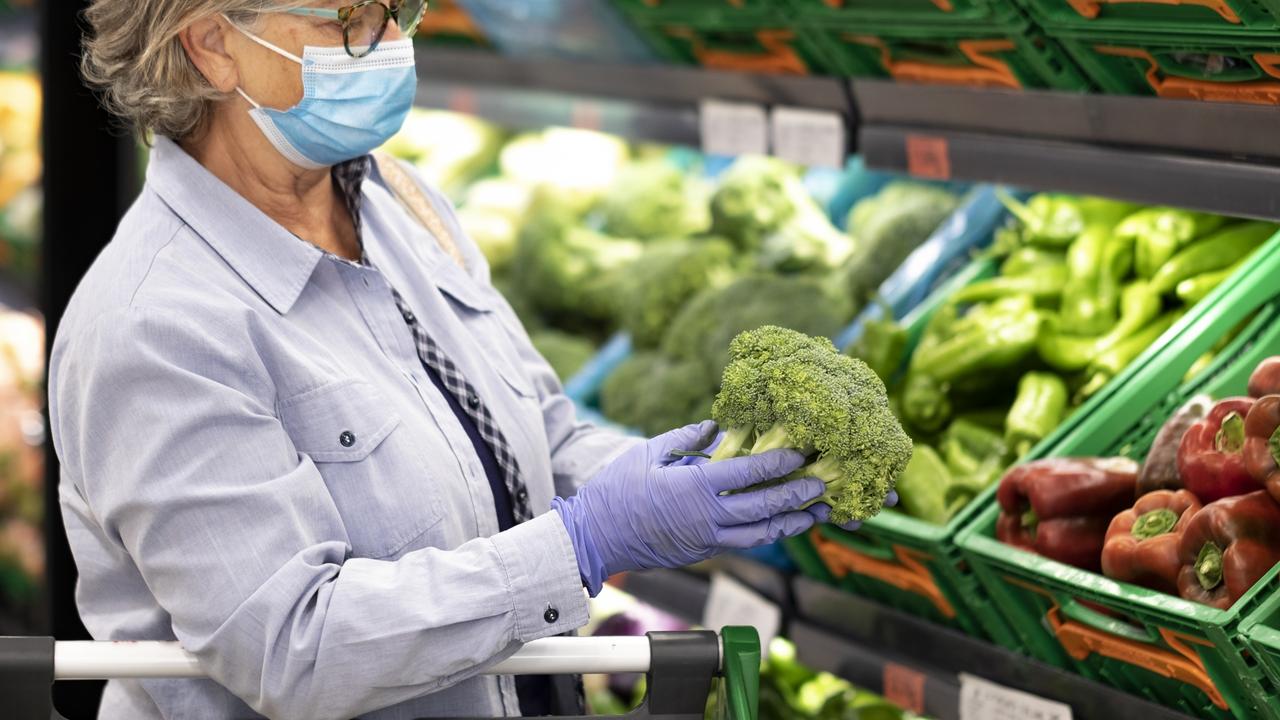Aldi’s whopping tax bill after huge $10.7 billion revenue
A rare glimpse inside one of Australia’s biggest supermarket brands has offered insight into their whopping profits.
What does Aldi stand for these days? You go in there and it looks … nice? Aldi started off as the Albrecht Discount supermarket. Al-Di. Founder Karl Albrecht was famously so frugal he would use one pencil until it had worn down to a stub too short to use any more.
When Aldi launched in Australia, it barely even had shelves, mostly just pallets piled up on the floor. The stores made you feel like you were in a bad Bi-Lo or the 1930s depression.


But now? Mood lighting and cute signage. You can even get brands in Aldi. Brands!
Turn on the TV and Aldi have an ad for lobster tails. Plus another ad for champagne! These aren’t cheapo ads either. They’re fun and cutesy and it’s obvious Aldi have paid some Maserati-driving, Bondi-dwelling advertising agents to run this ad campaign.

Has Aldi lost touch with its roots? What’s happened to the ultra-discounter attitude? Are they turning into a mini version of Coles and Woolies, edging prices up and pocketing the profits?
The answer is hard to find because Aldi is a private company. It doesn’t publish details on its profit margins, unlike Coles or Woolworths.
But when the corporate tax transparency report came out the other day, an idea occurred to me. Why not look up Aldi and see how much tax they pay? Companies pay tax on profit. So if they pay a lot of tax, that could be a sign they make big profit.
Most people use the data in that tax transparency report just to point the finger at the big oil and gas companies that never pay tax (hello to Exxon Mobil, you bad eggs). But there’s far more companies in there than just that. Including all your favourite supermarkets.
The vital clues
Aldi pays lots of tax. They paid $270 million in the last year for which we have data, 2020-21. But companies only have to pay tax on profit. The implication is Aldi is making surprisingly big profits.
They brought in $10.7 billion in revenue and declared $900 million in taxable income. That’s a margin of over 8 per cent.
Is it higher than the other supermarkets? Let’s have a look.
Sure looks like it. But that’s just one year, in the pandemic, when toilet paper prices went ballistic.
What if we compare over time? As the next graph shows, Aldi’s revenue to taxable income ratio has been rising since 2017, and really popped up in the pandemic.
Now, the tax paid as share of revenue is not exactly the same as profit margin. Accounting things can happen. Depreciation and financing costs, etc. Some of the change over time in this ATO data could be due to freaky accounting issues. But for Aldi it’s the best signal we have.
Inflation context
With inflation at its highest level in many years and with prices rising across the economy, the need for a true discount supermarket is higher than ever. Aldi’s prices are cheaper than the big supermarkets, but they are rising. And maybe that’s fine: Sometimes businesses need to lift prices because input prices are rising.
But rising prices also provide a big opportunity for businesses to put up prices for their own benefit. That’s legal, it’s allowed. But it’s not the core of the Aldi ethos.
Choice says Aldi was 15 per cent cheaper for the cheapest basket of Christmas goods from the big two supermarkets in 2018 (which was from Coles). But by 2021 it was only 11 per cent cheaper than the cheapest basket (which was from Woolies).

The question
Are they making profit margin by being efficient or by raising prices? It’s hard to tell. But Aldi are certainly no longer making such a fuss about being cheap, like they used to.
Their slogans used to be:
“Like brands, only cheaper”.
“Stop and smell the savings”.
“Switch and save”.
“Smarter shopping”.
Now it’s “Good. Different.”
No mention of being smart or cheap or offering savings. Which is not to say the price gap has disappeared. They still claim to be 15.6 per cent cheaper than Coles or Woolies on a basket of goods. (That’s not an independent report, it’s their own claim. CHOICE hasn’t done the analysis again this year.)
Still, the change in slogan tells us Aldi no longer thinks its price difference is the most important fact to communicate. If they think consumers don’t care about that, why wouldn’t they slide prices up a smidgen?
I love Aldi and it’s still definitely cheaper than the big two, but I’d love it more if they kept the foot on the pedal to keep prices down. I want them keeping pressure on the other supermarkets to do the same.
More Coverage
An Aldi that turns into a slightly cheaper Woolies full of Tim Tams and Milo but 5 per cent cheaper is not nearly as useful to Australia as one selling ‘Damora’ biscuits and ‘Lazzio’ coffee at half the price you’d pay elsewhere.
Still, Aldi hasn’t changed completely. I went there the other day and the checkout person still scans things at lightspeed and piles them up to eye height while I fumble and panic! It’s infuriating. But at least it’s familiar.
Jason Murphy is an economist | @jasemurphy. He is the author of the book Incentivology.






